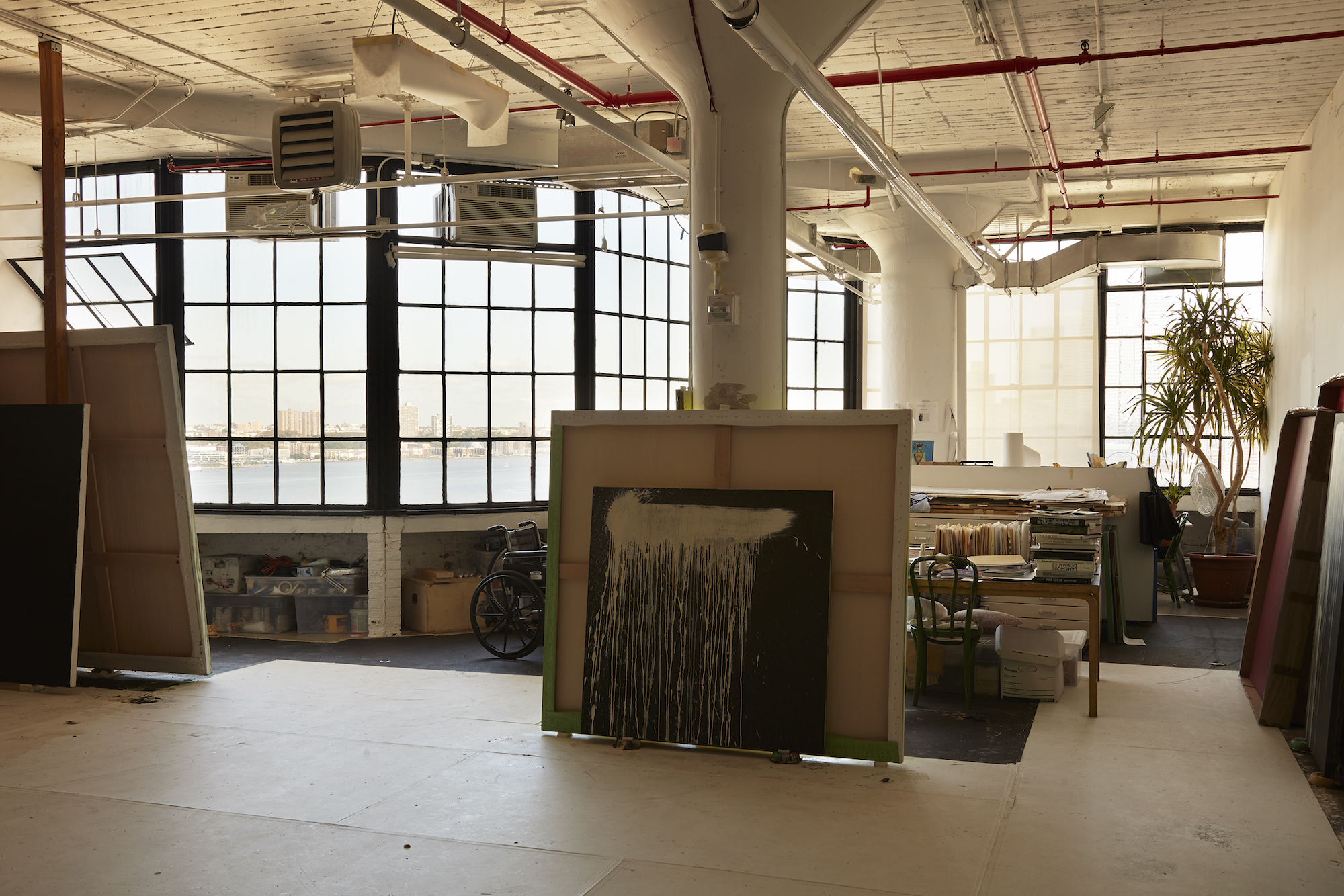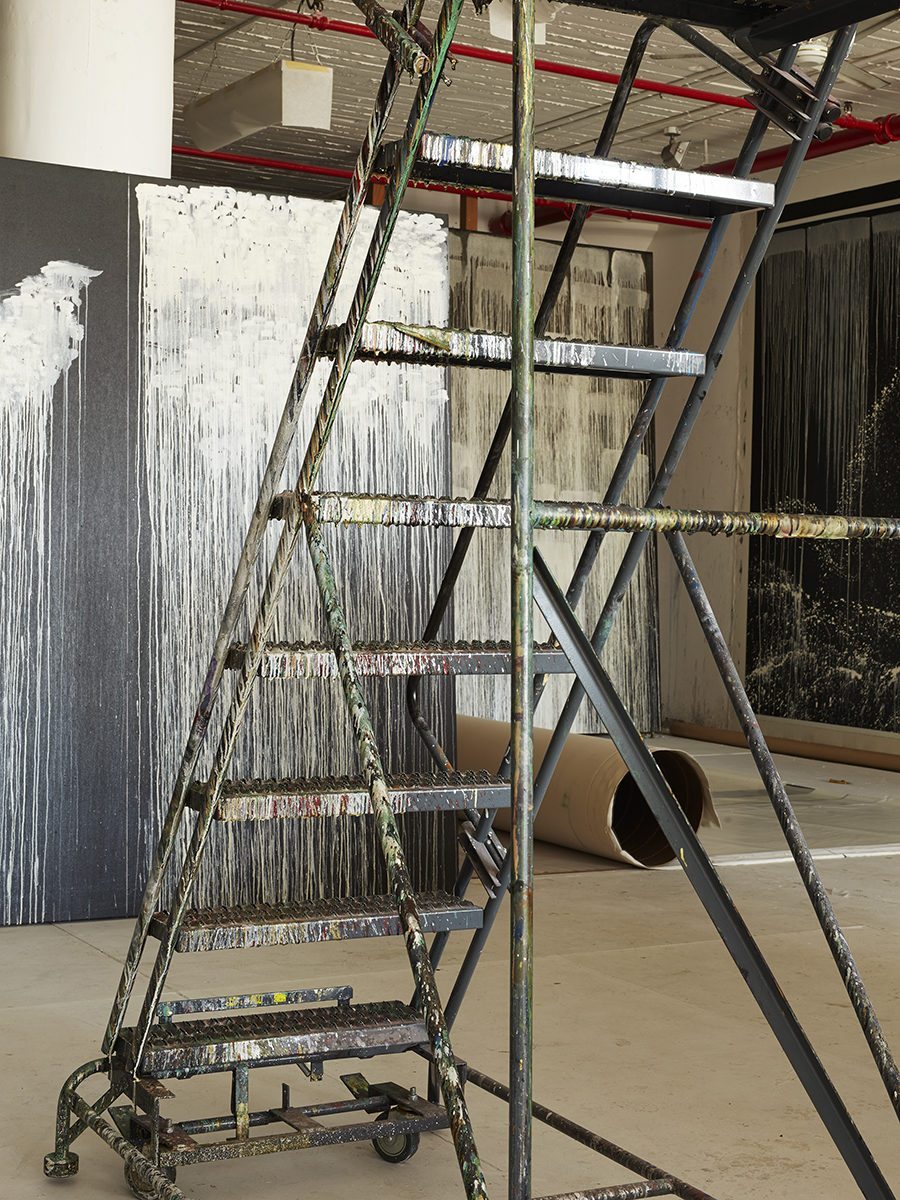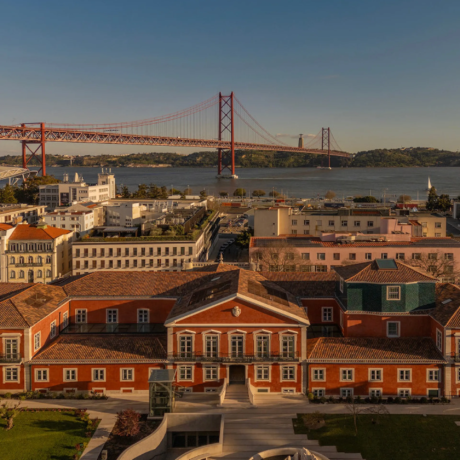
Pat Steir is back in New York City after summer at her second studio in Vermont. Every year she heads out of the smog of the town to produce new work, and this year she’s returned with a group of paintings to present (which are currently on view at Lévy Gorvy gallery in New York).
Born in the US during the Second World War, Steir studied art and philosophy, and in the 1960s, when she was starting out, was friendly with conceptual peers Sol LeWitt and Lawrence Weiner. In the 1970s she was known for her room-sized installations and later, influenced by the equally vanguard John Cage and Agnes Martin, she struck upon a method of poured painting, where she dripped paint onto paint, creating waterfall-like giant canvases which were stoic and imposing, suspended in time.
Her paintings might stand still and encourage you to be still with them, but Steir herself shows no signs of slowing down. Her paintings are very large and to make them Steir has to stand on a ladder with a bucket of paint, steadied by intuition. It looks arduous but, she says, it isn’t. The morning after her opening in New York, and the day before she returned to her studio to continue working, Steir spoke to Elephant.
How was it to return to New York after a summer in Vermont?
I just sold my studio in Vermont because it was too far to go to work, really. I often start paintings in Vermont during the summer and bring them back here to finish. The opening was wonderful. It was crowded with other artists, friends, people I’ve known for years—collectors and museum people. Mei-mei Berssenbrugge and her husband Richard Tuttle came from Maine just for one day.
Can we talk a little bit about the process behind the work you’re showing at Levy Gorvy gallery?
The work in this show is from across two years. There are no different techniques: I pour the paint. My idea is non-intervention in a way, and it’s not an ego-driven process—of course it is, but it is and it isn’t. I try to remove myself from the result. Pouring the paint, gravity, the wind in the room, air moving heat; I don’t try to control it. I time the pours so that I don’t pour wet paint into wet paint, so there’s a month of drying time between each pour. I work on two or three at once.
The process is very influenced by John Cage; I consider it conceptual painting, conceptual art. The colours you see at the end are the result of thin layers over each other, so it depends on how the paint falls when I pour it. I seize the appropriate moment with the dry underpainting—it’s a sort of semi-athletic moment. It goes like jazz music, easy, like a good basketball player getting the ball into the basket. The less effort that goes into it, the better the result.
“I’m trying to see something in the physics of the universe, that’s me trying to find something, and we all are in a way.”
Does that require you to relinquish control?
Learning to let go, yes, that’s what it’s all about. Letting go of control. Disappearing, trying not to say it’s good or bad, not trying to express myself. It’s like a physics equation, not only what paintings can do with paint but something more poetic and physical.

Do you remember the moment you came up with your pouring method?
I very slowly got into it. I started pouring the paint, but I was pouring heavy layers of paint to try to control it. In 1990s, the painting that was the “moment” is hanging in the MET. I was getting ready to paint more on top of it when I saw what I had.
Did you realize then you would keep going with this method, that that was “it” for you?
Yes but not in that way. I just kept doing another and another like that.
“I think everything I know on earth I’ve learned through making art.”
But your relationship with it, I imagine, has evolved over time?
Well, I enjoy it even more. It’s the kind of process I can use for the rest of my life. There’s no struggle to it. It looks like it’s physically demanding, but it isn’t. I think everything I know on earth I’ve learned through making art, and I think people connect to my work in that way, somehow that comes through. I’m not trying to teach the audience, I’m trying to learn something. It makes the work more humble. I’m trying to see something in the physics of the universe, that’s me trying to find something, and we all are in a way. We’re alive and it’s very mysterious.

Your way of working has often been aligned with the approach and philosophy of Eastern art practices.
Chinese and Japanese calligraphy and storytelling is something I found very inspiring because it’s a picture and a poem at the same time. I was also very inspired by Zen practice and waiting for the right moment. I was a student at Boston University and I lived right next to the museum there which has an incredible Asian Art collection that left a very big impression on me.
You’ve also said you’re interested in opening up space through your work?
I do a lot of site-specific work. The last group of works I did were changing the perspective, anti-perspective, like turning back art history, erasing the corners in a room, drawing what I call a closing line. I did a work like that at Thomas Schulte Gallery that was forty feet high with a teeny, teeny alteration. From the street it looked like a drawn line floating in space, but as you got closer you could see it as a painting on the wall. That jumps out at you, it was an optical illusion. There is also my ongoing museum project, Self Portrait, started in 1987, that’s very labour intensive. I pick up artists and students wherever I go, it takes a lot of people, I can’t do it alone. I’ve done thirteen museums now, using found images from Italian academic artists. The last one was two years ago, and I’m going to do two more that I know of. It’s nice to work with other people sometimes.
“It’s also a political gesture to put something beautiful into the universe.”
Yes, there’s a collective existential crisis we’re all grappling with, especially now, politically. Can painting respond to or alleviate that?
I think there are more ways to make a political painting than to reflect the ugliness of the time or the political moment. A lot of people are making political art that’s ugly, mirroring how things are here and now. It’s one way to be political for sure but it’s not my way. The simple effort of someone trying to find something not positive or negative but something true, like science, to find some truth about why things hang together. It’s also a political gesture to put something beautiful into the universe. By beautiful I don’t mean the surface of the painting, I mean the surface of the effort. A friend who came to the opening said to me “I came to celebrate not only your work but you, what you do on earth.” I think that’s one way to be political, to do something that reflects something positive, which at this time is necessary.
Pat Steir, Kairos
Until 21 October at Levy Gorvy, New York
Photography © Tim Smyth








